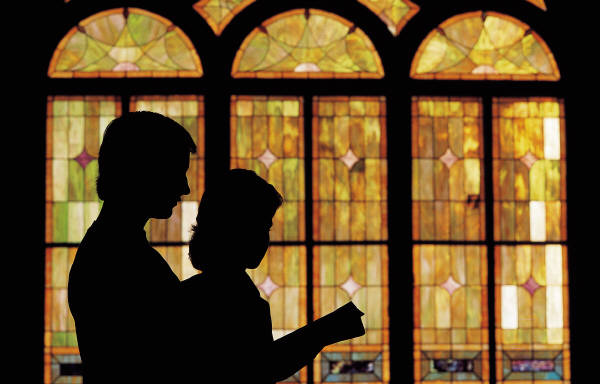The Veiled Feminism Of Moroccan-Born Photographer Lalla Essaydi
In his landmark book, Orientalism, the late scholar Edward Said wrote of “exteriority,” a disconnect between the traveler’s fantasies and reality. Reading the travelogues of French writers, Said once explained that he found “representations of the Orient had very little to do with what I knew about my own background in life.”

From Bullet, by Lalla Essaydi.
The work of photographer Lalla Essaydi sits somewhere inside the gaps Said felt so keenly. Part of a new wave of Moroccan artists enjoying success under the liberalized reign of King Mohammed VI (who holds some of Essaydi’s pieces in his private collection), she lives in New York City and works from her family home in Morocco, a large and elaborate house dating back to the 16th century. The portraits she shoots inside — always of women — recall 19th century French depictions of Arab concubines, popularly known as odalisques.
In Essaydi’s portraits, you can see the ghost of the naked odalisque — objectified even in being termed. But Essaydi’s women show little flesh. They gaze into the camera, as if challenging the viewer directly. Some look positively regal, like the women in her “Bullet” series, who wear a sort of chain metal she fashioned out of flattened bullets.

From Bullet Revisited, by Lalla Essaydi.
Stretches of the body not hidden under fabric are obscured by calligraphy drawn on by Essaydi herself, script that she calls “deliberately indecipherable.” In much of the Arab world, calligraphy is traditionally taught exclusively to men. Essaydi uses the art form as a way to dismantle preconceptions of what women can do or be. Having trained herself in it, she adorns much of her set with henna, a dye associated with weddings and femininity. The text is a mishmash of words loosely inspired by conversations on identity she has with her subjects, who are often family members and friends. In an email to HuffPost, she explained that she writes unintelligibly, so as to throw into question distinctions between “the visual and the textual, along with the European assumption that text constitutes the best access to reality.”

From Harem, by Lalla Essaydi.
She is largely inspired by the work of Jean-Léon Gérôme, a foundational 19th century Orientalist painter who famously depicted slave markets and bathhouses based on his travels to Egypt. Gérôme belonged to a tradition rooted in England and France, countries with colonies in the Middle East. For these painters working before the popularization of the camera, the aim was partly to create a historic record of the dishes, fauna, and other stuff of life so far from the West, yet still possessed…



